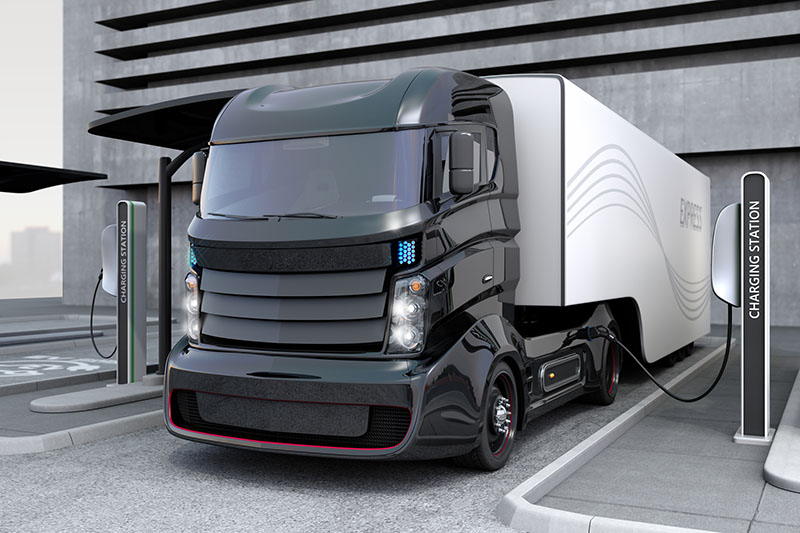Large order of electric delivery vehicles serves as latest example of Amazon raising the stakes

With so many moving parts in today’s supply chain and logistics world, it can often be difficult to keep track of the myriad trends and themes occurring. But there is one thing that ostensibly continues to get everyone’s attention, to be sure. That one thing (spoiler alert…) is again the emerging influence and presence of global e-commerce giant Amazon’s supply chain- and logistics-influenced moves.
The most recent move by Amazon came last week, when it announced that as part of its commitment to net zero carbon by 2040 and 100% renewable energy by 2030 as part of what it called The Climate Pledge, whose objective is to meet the Paris Agreement ten years ahead of schedule by 2040, it has ordered 100,000 electric delivery vehicles, which it said represents the “largest order ever for electric delivery vehicles.”
Amazon Founder and CEO Jeff Bezos was direct in explaining why it is forging ahead with this effort: “We’re done being in the middle of the herd on this issue—we’ve decided to use our size and scale to make a difference. If a company with as much physical infrastructure as Amazon—which delivers more than 10 billion items a year—can meet the Paris Agreement 10 years early, then any company can. I’ve been talking with other CEOs of global companies, and I’m finding a lot of interest in joining the pledge. Large companies signing The Climate Pledge will send an important signal to the market that it’s time to invest in the products and services the signatories will need to meet their commitments.”
As for its order of 100,000 electric delivery vehicles, Amazon pointed to its $440 million investment into Rivian, a Plymouth, Michigan-based producer of emissions-free electric vehicles, which it said will spur electric vehicle production that is key in reducing transportation emissions.
What’s more, its said that the vans Amazon is buying from Rivian will start package delivery to customers on 2021, with 10,000 of the vehicles on the road by 2022 and all 100,000 vehicles on the road by 2030, a move it said will save 4 million metric tons of carbon annually by 2030. That is a staggering statistic to say the least.
In a research note, Morgan Stanley analyst Ravi Shanker noted that Amazon ordering these vehicles from Rivian is significant on a few different fronts.
“It is a new benchmark for the scale of AMZN’s internal logistics operation,” he wrote. “AMZN has already placed orders for 20,000 Sprinter vans in 2018 (which made AMZN Daimler’s largest Sprinter van customer) after their previous 5,000 van order. The Rivian order represents a step-function change in AMZN’s last-mile fleet. We note that, by comparison, UPS has 123,000 ground delivery vehicles (including package cars, vans, tractors and motorcycles (globally).
And the analyst added that it is unclear if the AMZN Rivian order is for US deployment only or global, observing that it is possible that AMZN could have a larger last-mile fleet than UPS by 2024.
From a competitive perspective, Shanker wrote that this move places press on global parcel and logistics players to up the ante on their respective ends.
“AMZN has stated its ambition to convert 100% of its delivery fleet to renewable energy by 2030 (40% of its fleet is already renewable),” he wrote. “We believe this could put pressure on UPS, FDX, DHL to respond similarly. We note that AMZN’s Rivian order builds on the Amazon-led $700 million investment round in Rivian earlier this year. UPS and FDX have made promising initial moves toward electrification but converting their delivery fleet to renewable energy could be another driver of higher capex spending at UPS/FDX/DHL in the coming years.”
This development serves as the most recent example of Amazon further leveraging its vast scale, financial resource, and intuition to continue to raise the stakes for all supply chain and logistics stakeholders to take similar “green” steps. And why not? Given the current geopolitical climate in oil-producing nations, as well as the separate but related pending IMO 2020 mandate, it makes a lot of sense to take a stand and move in this direction. It will be interesting to see how the market reacts and responds, to say the least.

Article Topics
Latest in Logistics
LM Podcast Series: Assessing the freight transportation and logistics markets with Tom Nightingale, AFS Logistics Investor expectations continue to influence supply chain decision-making The Next Big Steps in Supply Chain Digitalization Under-21 driver pilot program a bust with fleets as FMCSA seeks changes Diesel back over $4 a gallon; Mideast tensions, other worries cited Four U.S. railroads file challenges against FRA’s two-person crew mandate, says report XPO opens up three new services acquired through auction of Yellow’s properties and assets More LogisticsAbout the Author
Subscribe to Logistics Management Magazine

Find out what the world's most innovative companies are doing to improve productivity in their plants and distribution centers.
Start your FREE subscription today.
April 2023 Logistics Management

Latest Resources














